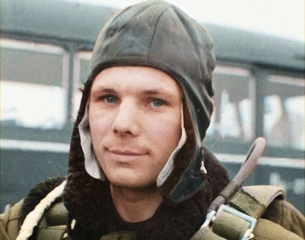The first three recipients of Bharat Ratna were C. Rajagopalchari, Dr. S. Radhakrishnan and Dr. C. V. Raman in 1954.

Later, the design of the medal was modified and current medal is in the shape of a peepal leaf, approximately 59 mm long, 48 mm wide and 3.2 mm thick and rimmed in platinum. The embossed sun burst design, made of platinum, on the obverse side of the medal has a diameter of 5⁄8 inch (16 mm) with rays spreading out from 5⁄6 inch (21 mm) to 1⁄2 inch (13 mm) from the center of the Sun. The words "Bharat Ratna" on the obverse side remained the same as the 1954 design as did the emblem of India and "Satyameva Jayate" on the reverse side. A 2-inch-wide (51 mm) white ribbon is attached to worn around the neck. In 1957, the silver-gilt decoration was changed to burnished bronze.
Reverse Side: A platinum State Emblem of India placed in the centre with the national motto, "Satyameva Jayate" (Truth alone triumphs) in Devanagari script.
Facts About Bharat Ratna Award
1. The award was started by former President of India Rajendra Prasad on 2nd January, 1954.
2. The "Bharat Ratna" medals are produced at Alipore Mint, Kotkata along with the other civilian awards like Padma Vibhushan, Padma Bhushan, Padma Shri and wartime gallantry awards like Param Vir Chakra, Maha Vir Chakra and Vir Chakra.
3. The total cost of one Bharat Ratna medal & miniature along with its box costs Rs 2,57,732.
4. At the commencement of this award, only alive people were eligible for this award. Later on, this criterion had changed.
5. First recipients of this award were Dr. Sarvapalli Radhakrishanan, Sir C. V. Raman and Chakravarti Rajagopalachari in 1954.
6. Sachin Tendulkar is the first sportsperson and the youngest Bharat Ratna Award winner.
7. M.S. Subbalaxmi was the first musician to get this award.
8. Subhash Chandra Bose was awarded with Bharat Ratna posthumously in 1992, but due to controversy (as there is no evidence of Subhash Chandra Bose's death) his family refused to accept the award. This is the only incident in the history of Bharat Ratna that an award was withdrawn.
9. In 2013, Bharat Ratna was awarded to Sachin Tendulkar and C.N.R. Rao.
10. It is not mandatory that Bharat Ratna should be awarded every year.
11. The award does not carry any monetary grant.
12. The Prime Minister suggests the nominees to the President of India who makes the final decision about who should get the awards for the particular year.
13. Maximum of three nominees can be selected for the award in a year.
14. In terms of Article 18 (1) of the Constitution, the award cannot be used as a prefix or suffix to the recipient's name. But an award winner may use the expressions ‘Awarded Bharat Ratna by the President’ or ‘Recipient of Bharat Ratna Award’ in their biodata/letterhead/visiting card etc. to indicate that he/she is a recipient of the award.
15. Recipients of Bharat Ratna Award are entitled for diplomatic passports and lifetime free executive class travel on Air India. Diplomatic Passport has a Maroon cover and is issued to Indian diplomats, top ranking government officials and diplomatic couriers. Diplomatic passport entitles them for a separate immigration counter, access to VIP lounge in the airports etc. Apart from this, the Indian Missions abroad extend them all possible support in their visits abroad.
16. Vallabhbhai Patel is the eldest to receive the award after death and Gulzarilal Nanda is the eldest alive person to receive the award at age 99.
17. Lal Bahadur Shastri was the first person to be honoured with Bharat Ratna posthumously and Indira Gandhi was the first woman recipient of Bharat Ratna.
18. Mother Teresa was the first naturalized Indian citizen who received the Bharat Ratna Award in 1980.
19. Khan Abdul Ghaffar Khan (1987) and Nelson Mandela (1990) are two non Indians who got Bharat Ratna award.

0 Comments